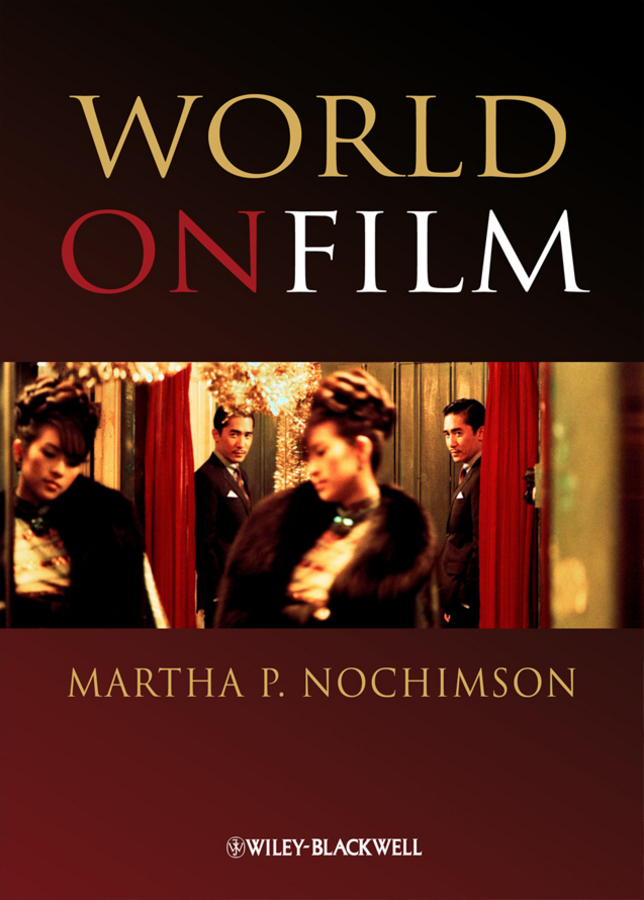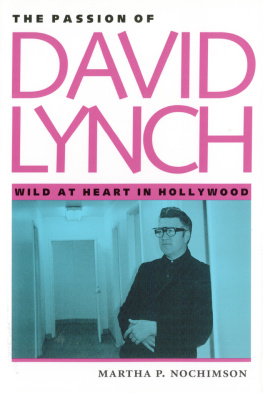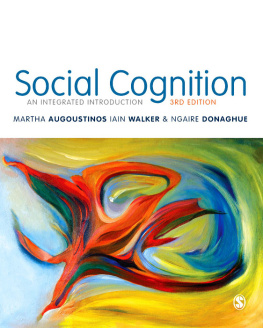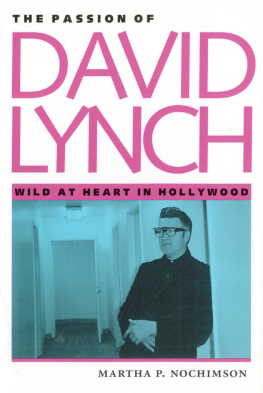Martha P. Nochimson - World on Film: An Introduction
Here you can read online Martha P. Nochimson - World on Film: An Introduction full text of the book (entire story) in english for free. Download pdf and epub, get meaning, cover and reviews about this ebook. year: 2010, publisher: Wiley-Blackwell, genre: Art. Description of the work, (preface) as well as reviews are available. Best literature library LitArk.com created for fans of good reading and offers a wide selection of genres:
Romance novel
Science fiction
Adventure
Detective
Science
History
Home and family
Prose
Art
Politics
Computer
Non-fiction
Religion
Business
Children
Humor
Choose a favorite category and find really read worthwhile books. Enjoy immersion in the world of imagination, feel the emotions of the characters or learn something new for yourself, make an fascinating discovery.

- Book:World on Film: An Introduction
- Author:
- Publisher:Wiley-Blackwell
- Genre:
- Year:2010
- Rating:4 / 5
- Favourites:Add to favourites
- Your mark:
- 80
- 1
- 2
- 3
- 4
- 5
World on Film: An Introduction: summary, description and annotation
We offer to read an annotation, description, summary or preface (depends on what the author of the book "World on Film: An Introduction" wrote himself). If you haven't found the necessary information about the book — write in the comments, we will try to find it.
World on Film: An Introduction — read online for free the complete book (whole text) full work
Below is the text of the book, divided by pages. System saving the place of the last page read, allows you to conveniently read the book "World on Film: An Introduction" online for free, without having to search again every time where you left off. Put a bookmark, and you can go to the page where you finished reading at any time.
Font size:
Interval:
Bookmark:


This edition first published 2010
2010 Martha P. Nochimson
Blackwell Publishing was acquired by John Wiley & Sons in February 2007. Blackwells publishing program has been merged with Wileys global Scientific, Technical, and Medical business to form Wiley-Blackwell.
Registered Office
John Wiley & Sons Ltd, The Atrium, Southern Gate, Chichester, West Sussex, PO19 8SQ, United Kingdom
Editorial Offices
350 Main Street, Malden, MA 02148-5020, USA
9600 Garsington Road, Oxford, OX4 2DQ, UK
The Atrium, Southern Gate, Chichester, West Sussex, PO19 8SQ, UK
For details of our global editorial offices, for customer services, and for information about how to apply for permission to reuse the copyright material in this book please see our website at www.wiley.com/wiley-blackwell.
The right of Martha P. Nochimson to be identified as the author of this work has been asserted in accordance with the UK Copyright, Designs and Patents Act 1988.
All rights reserved. No part of this publication may be reproduced, stored in a retrieval system, or transmitted, in any form or by any means, electronic, mechanical, photocopying, recording or otherwise, except as permitted by the UK Copyright, Designs and Patents Act 1988, without the prior permission of the publisher.
Wiley also publishes its books in a variety of electronic formats. Some content that appears in print may not be available in electronic books.
Designations used by companies to distinguish their products are often claimed as trademarks. All brand names and product names used in this book are trade names, service marks, trademarks or registered trademarks of their respective owners. The publisher is not associated with any product or vendor mentioned in this book. This publication is designed to provide accurate and authoritative information in regard to the subject matter covered. It is sold on the understanding that the publisher is not engaged in rendering professional services. If professional advice or other expert assistance is required, the services of a competent professional should be sought.
Library of Congress Cataloging-in-Publication Data
Nochimson, Martha.
World on film : an introduction / Martha P. Nochimson.
p. cm.
Includes bibliographical references and index.
ISBN 978-1-4051-3978-6 (hardcover : alk. paper) ISBN 978-1-4051-3979-3 (pbk. : alk. paper)
1. Motion pictures. I. Title.
PN1994.N495 2010
792.09dc22
2009033121
A catalogue record for this book is available from the British Library.
ACKNOWLEDGMENTS
Working on World on Film has allowed me to spend my days for several years in the company of directors and actors of surpassing brilliance, courage, and passion: a joy from start to finish. Most of my encounters have been in front of a screen watching, sometimes with eyes wide with astonishment, cinema of beauty and originality. No matter how many times you watch a Fellini film, you are prone to amazement. The same might be said for the work of Jean Renoir, Akira Kurosawa, Yasujir Ozu, Vittorio De Sica, Rainer Werner Fassbinder, and performances by Jean Gabin, Amitabh Bachchan, Marcello Mastroianni, and Toshiro Mifune. I have also read autobiographical works by some of the artists discussed in the following pages and, in two instances, I have had the rare pleasure of in-person conversation: with Wong Kar-Wai and Jia Zhangke. The sky was never as wide and high as it has been during the preparation of this text.
I have had immense support from the University Seminars at Columbia University and colleagues, friends, and family. Inverting the traditional order, I would like to thank first my editor at Wiley-Blackwell, the incomparable Jayne Fargnoli, and her associates Margot Morse and Ken Provencher, who is now setting sail in his own career in film studies. Thank you to Karen Backstein, intrepid copy editor, whose meticulous work is responsible for a lot that is good about the final form of World on Film. Thank you to Robert Belknap, the Director of the University Seminars at Columbia, for his support and guidance, and Id like to express my appreciation to the University Seminars at Columbia University for assistance in the preparation of the manuscript for publication. The ideas presented have benefited from discussions in the University Seminar on Cinema and Interdisciplinary Interpretation. Thanks, for the time and trouble they took advising me about the chapters, should go to Patricia Erens, Lucy Fischer, Joseph Kickasola, Thomas Leitch, Cynthia Lucia, William Luhr, Gina Marchetti, Linda Mizejewski, Rekha Morris, Diane Negra, Frank Tomasulo, and Jill Watts. For their support, many thanks to Bob Cashill, Gary Crowdus, Jane Gaines, Krin Gabbard, Abe Hendin, and Arthur Vincie. And from the bottom of my heart to my essential person, Richard Nochimson.
HOW TO USE THIS BOOK
Although there is a distinctly global flavor to American life today, there is noticeable student discomfort with engaging world film. Subtitles, is the cry. The students dont like subtitles! But while there is an undeniable truth here, it may not be a productive focus in considering pedagogy. World on Film is predicated on a pedagogy that will provide students with a comfort zone that trumps subtitles in the assignment of world film. It is also sensitive to the need to bridge the gap for students into the wilds of other cultures by providing basic background information that will allow them to appreciate the significance of the work on its own cultural terms without either sounding remedial or compressing the information to an economy that will make it impossible to absorb. (Think: textbooks on international film that are often a laundry list of names and titles.)
In each chapter, World on Film immediately highlights the real intersections between American students and films from other cultures, and addresses its readers with key images that tap into the more universal discourse of sight to serve as a springboard into the deeper waters of background and analysis. The language of the chapters, while pointing toward sophisticated concepts, is jargon free. World on Film principally addresses lower-division Film Studies majors in undergraduate college, but can also be used effectively in elective college courses created for non-majors and in film classes open to high-achieving upper-division high-school students.
World on Film is divided into two parts. The first part focuses on the development of national film cultures from the inception of moving pictures to the end of the twentieth century. The second part traces the trend toward international rather than national film that began in earnest after World War II. In the first part there are six chapters, each of which contains at least one case study about a leading figure in the nations history of cinema, plus a healthy selection of films, offered chronologically, that represent major cinematic developments. Each offers mid-chapter and end-chapter thought and writing exercises and a list of secondary sources. The second part contains five chapters about filmmakers who represent the cresting tide of internationalism in world film.
World on Film contains at least ten times more material than can be taught in one course. It is intended as a resource cabinet from which cultural background information and in-depth discussions of individual films may be extracted from chapters of interest to create an array of designs for courses on international film. The introductions to both Parts I and II are intended to give the students important guidelines for the study of whatever films are chosen by the instructor; it is advisable to assign them and discuss them in class whenever
Font size:
Interval:
Bookmark:
Similar books «World on Film: An Introduction»
Look at similar books to World on Film: An Introduction. We have selected literature similar in name and meaning in the hope of providing readers with more options to find new, interesting, not yet read works.
Discussion, reviews of the book World on Film: An Introduction and just readers' own opinions. Leave your comments, write what you think about the work, its meaning or the main characters. Specify what exactly you liked and what you didn't like, and why you think so.







